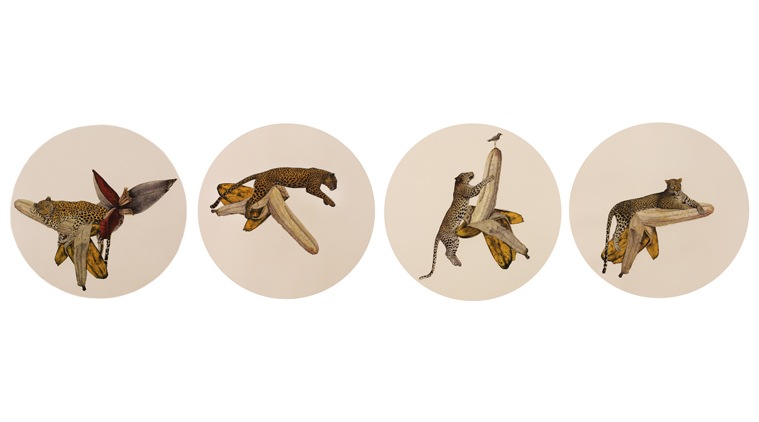 Avishek Sen’s He’s Not Here to Give a Speech. (Photo: Aicon Gallery)
Avishek Sen’s He’s Not Here to Give a Speech. (Photo: Aicon Gallery)
The worst might be arguably over in New York, with the number of coronavirus cases dipping, but artist Avishek Sen is warning New Yorkers and the world how man’s relentless desire to dominate nature has led to a disturbing imbalance. At the busy Great Jones Street in New York, Aicon Gallery is showcasing the Delhi-based artist’s works in an exhibition titled, “Whoever brought me here will have to take me home”. “The title is influenced by Rumi’s poem… We are in a situation where we feel helpless. Everyday we are getting confusing news about the same thing, so it is like leaving things to someone and trusting that power will take you home, a place where you feel safe,” says Sen, 44.
Though he could not travel for the exhibition as planned, Sen notes how perhaps this is a good time for reflection. “I feel connected with nature; there is life and the same being everywhere… I engage with the skin, the flesh, the juxtaposition of simplicity and organic complexity in these beings. I try to think of some way to let myself become the object of my study. And sometimes, I let them play with each other,” says Sen.
In the set of works on view — on the gallery walls till July 18 and the website — Sen constructs myriad forms and throws several questions at the viewers by focussing on the often-overlooked details. The works Sacrifice and Offering, for instance, have “glistening” melon and jackfruit seeds respectively, focussing on rawness and fertility. In Holy Dip, two pears sit in the tub with a towel, and in He’s Not Here to Give a Speech, we see a cheetah and a gigantic banana — the former hanging on the fruit in one frame, and in yet another, the phallus-shaped fruit becomes its extension. The titles are telling. “I try to give poetic cues and perspectives to my viewers… I would listen to a lot of stories during my childhood and I think my desire to form a narrative comes from there,” says Sen.
 An artwork by Avishek Sen. (Photo: Aicon Gallery)
An artwork by Avishek Sen. (Photo: Aicon Gallery)
So in When reality begins to warp, we see a cow with a crocodile head, it’s tongue hanging out with a figure standing on it. “In India, the cow is a spiritual animal, it is also a silent animal, but sometimes, a situation comes where non-violent things also turn violent in a different perspective. I juxtapose it with the more aggressive crocodile. The snake coming out of its mouth probably comes from inside the cow. A deity stands on the head of the snake, it will probably keep us safe. Likewise, in our body too, there is good and bad,” adds Sen.
While his childhood was spent in the lap of nature, in a village near Kharagpur in West Bengal, Santiniketan strengthened this bond. A 2006 art residency in Paris, meanwhile, offered an opportunity to study the works of Western masters. “I saw several masterpieces,” says Sen. Viewers at his solo in Delhi, “Bedtime Stories” at Gallery Espace in 2015, would recall the fluidity of his intricate watercolours. The current set of works reflect the same. The influences extend to miniatures and mythology, reflecting his admiration for traditional Indian art forms. “As a child, I used to spend a lot of time making ripples in water by skimming stones. What I do now is just the reverse. Each day I try to see the deep, still body of water inside me, waiting for reflection,” he adds.